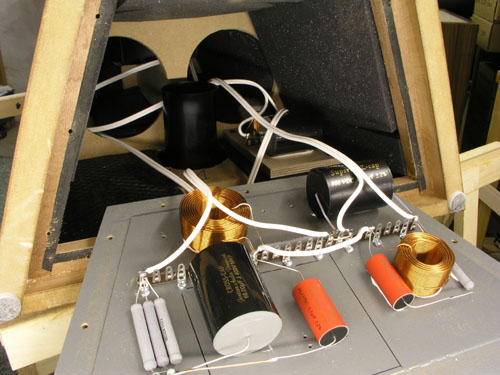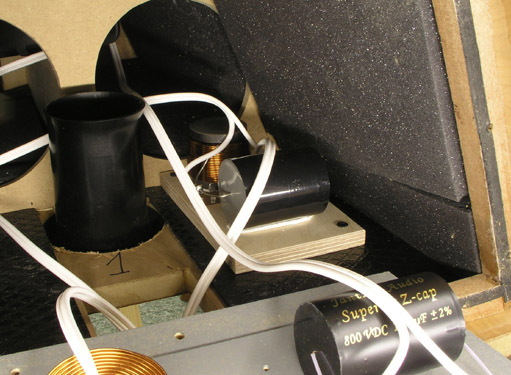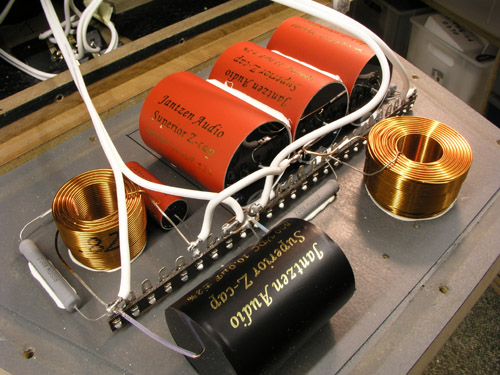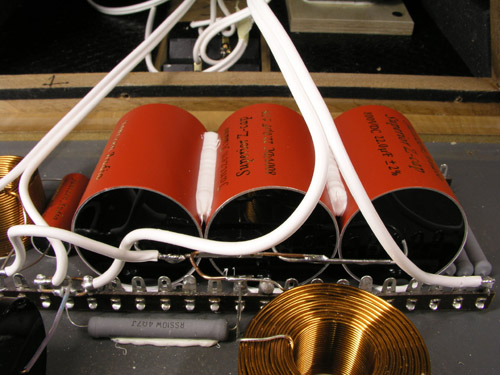|
|
|
The Cabinets - Back to top - Download Acapella drawings, pdf file Port for Fb= 36-38 Hz: Cut supplied 68 mm port length to 120 mm. 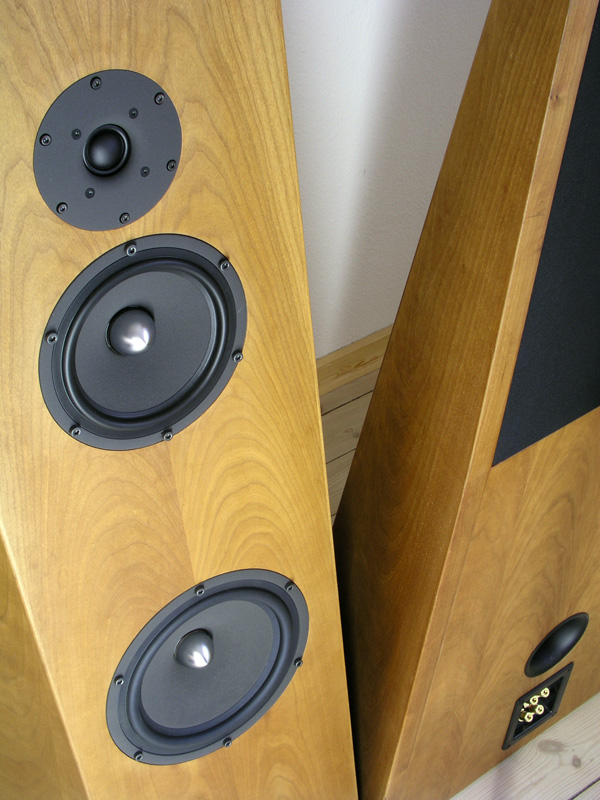 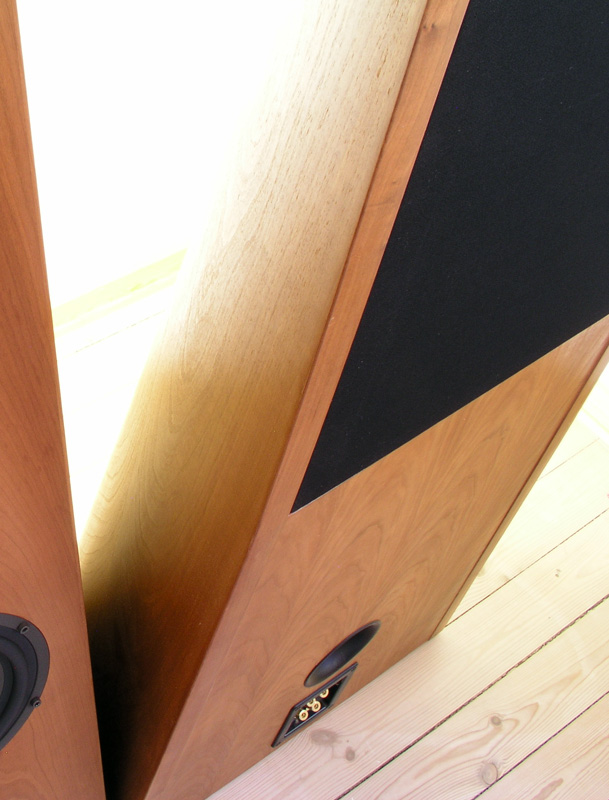 |
|
|
The
Complete Kit
All technical questions to troels.gravesen@hotmail.com
A few comments on
MEASUREMENTS before you start interpreting the readings below.
Left: Green = combined
response from all drivers driven from crossover.
Purple = bass + midrange. Blue = tweeter. Red =
mid + tweeter.
eft: System impedance. Minimum is 3.8
ohm at 150 Hz. To make a long story short: This is an easy speaker to
drive and my 20 wpc single ended triodes have no trouble
driving this speaker to considerable levels.
The above two
measurements are not normalised for 1 m/2.8V.
Out of curiosity I tried to overlay my W22NY001 measurement with the SEAS graph from the data sheet and I was pleased to see a good correlation between measurements. Blue = SEAS measurement. Red = my measurement where the response merged with nearfield response at 300 Hz is close to actual and predicted SEAS claims.
I like this speaker so much I'm going to give the whole system an overhaul: Cabs need sanding and a fresh oil rub and I'm going to finish the rear grille, which has been on the shelf ever since I built the cabs. A new port must be installed and new binding posts as well. I'm going to use Jantzen Audio Superior Z-cabs for the tweeter and possibly for the mid as well. I mean: The drivers alone are some 1,000 EUR, so they deserve the best in terms of crossover components. First I'll try Cross Caps for the mid on one speaker and Superior Z-caps for the mid on the other and try an AB test. The crossover layout has to be prepared to 3 x 22 uF Superior Z-caps; takes quite some space, 123 x 106 mm. The bottom panel should leave plenty of room for the mid crossover. The bass crossover will be on the rear panel with the coil upwards to keep distance to mid crossover below. The tweeter crossover will be placed right above the tweeter like the Acapella SEas. Here are some pics from the work:
Crossover layout-
Mid x-over:
Now, this is a temporary set-up. The Superior Z-caps to the right is going to stay in place (1 uF + 8R2 bypassing the series 0.82 mH coil. The 10 uF Superior Z-cap goes to ground. The series 68 uF to the left is the series input capacitor making the high-pass filter together with the 4.5 mH + 4R7 going to ground. For my initial set-up I by-passed the 68 uF Cross-Cap with a 1.5 uF Superior to possibly optimise the performance of the Cross-Cap. So far, so good. Below to the right you can see a chunky load of paralleled Superior Z-caps making almost 68 uF capacitance. This is going into the other speaker and I'm going to AB-test these two speakers. Quite a challenge I think. Everything is the same except for the chunk of Superior Z-caps for the midrange in one speaker. Disregard the black colour of the 10 uF Superior Z-cap. This is a test samples I had before the bordeaux red colour was decided.
Left: Mid X-over
section seen from above. As can be seen,
a lot of space is left open for 3 x 22 uF
Superior Z-caps in parallel; black marking on
bottom panel.
Left:
Mid X-over section ready for
installation.
Right: Bass X-over section on rear panel with coil as far away as possible from mid section coils. Before fastening the
bottom panel, two sheets of MDM3 damping material
were folded and placed above mid X-over. Take
care not to block vent.
Sonic evaluation of mid series capacitor contest Well, this is difficult! Having set up the two speakers as described above, the fun started. One speaker with Superior Z-caps (SZC) to the mid, the other with Cross-caps (CC). All other things the same. Frequency response was checked and was the same for the two speakers within 0.5 dB. It's hard to get any closer than that. In my workshop I have a connection panel attached to the power amp so that I can switch between two pairs of speakers. The two speakers
certainly didn't sound the same. One brighter
than the other. The CC version
sounded brighter compared to the SZC,
but at the same time, while listening to the SZC
version my perception of the sound could swap -
and all of a sudden I could hear the Superior
Z-cap version being the brightest. Weird!! During this exercise I changed the position of the speakers from time to time - left and right. These are dipoles or rather semi-dipole speakers and highly dependent on room position. However, still what is described here followed the speakers no matter what position they had. The SZCs simply reveals details and a depth in the acoustic scenario the CCs are not capable of. The CCs certainly aren't bad, not at all. They very much sound like what we're used to hear from the majority of hifi-speakers. Even if you don't have high-quality front end gear, SZC will improve sense of depth and perspective.
I once borrowed an
expensive Parasound pre-poweramp set-up.
Mega watts and I've never seen so many
transistors and integrated circuits in a preamp.
Sound? Nice, smooth - and utterly dull and
un-inspiring. I better order 6 x 22 uF SZC. Having bundled my residual stock of Superior Z-caps I now have both running with SZCs and they are in my living room right now, driven from my 20 wpc SET amps. Thank Heaven I didn't get rid of the Acapella cabs during my Autumns sale. 20 wpc do well, even up to considerable levels, but ultimately I recommend 40 wpc really high-quality watts for these 90 dB/2.8V speakers. It will provide a more firm bass and the ability to play really loud too. What more can I say? Enjoy! - and here's the final mid
Superior Z-caps
|
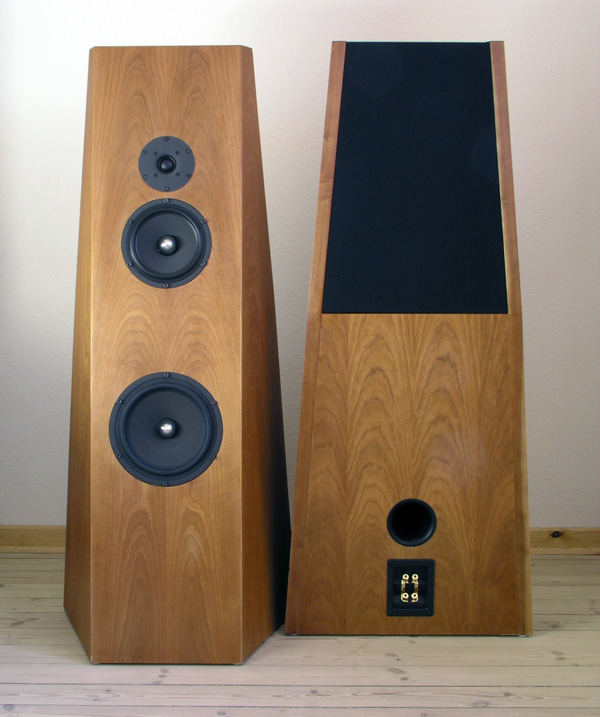
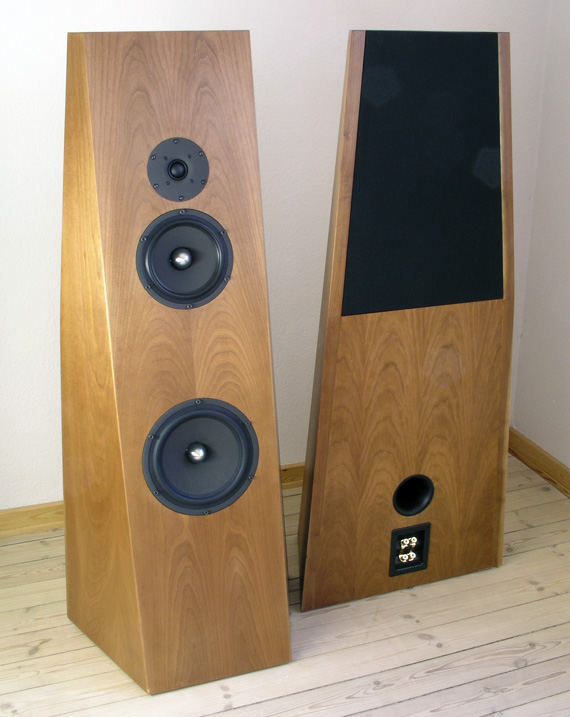

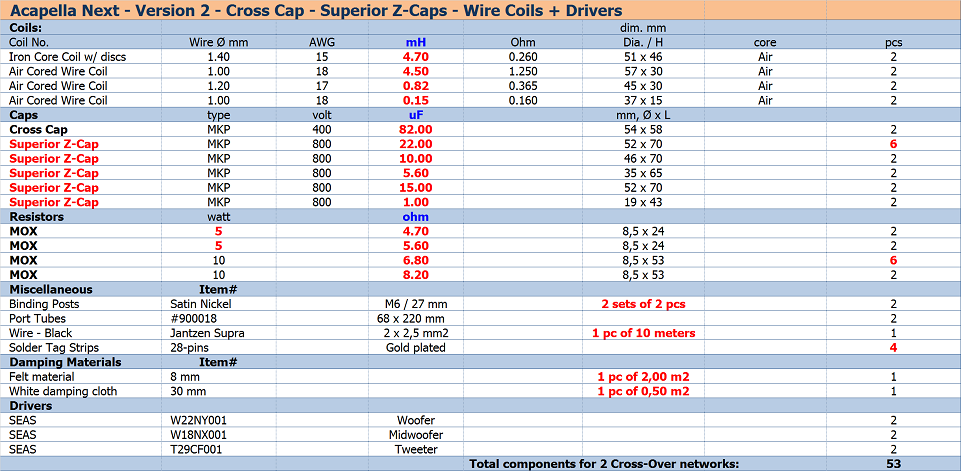
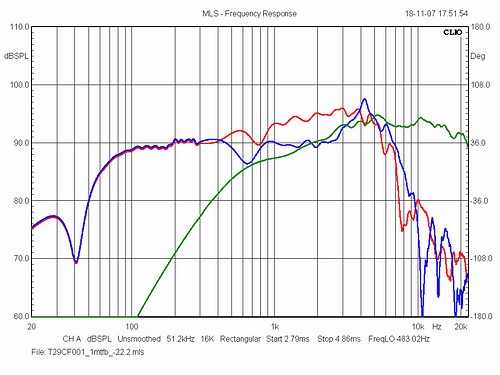
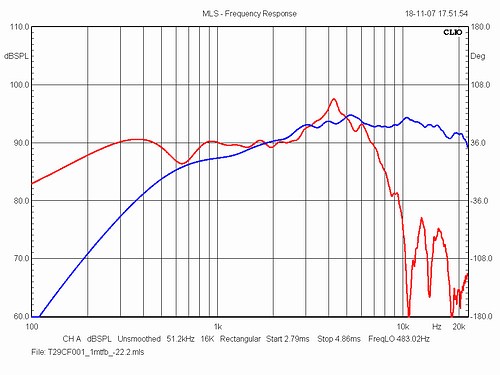
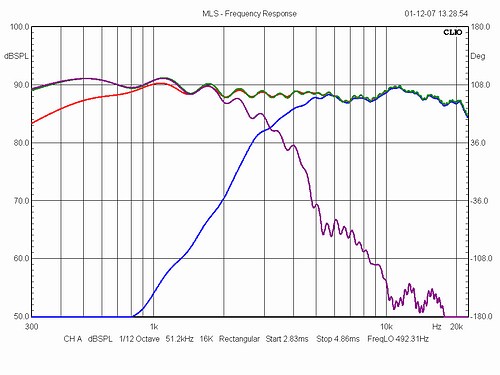
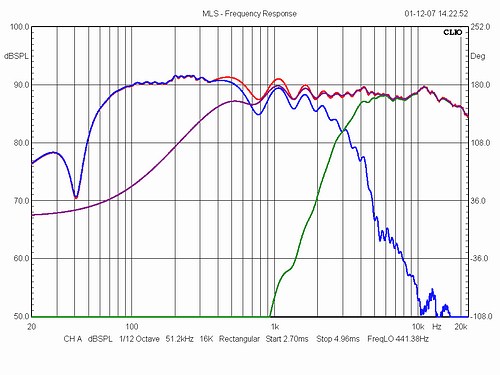
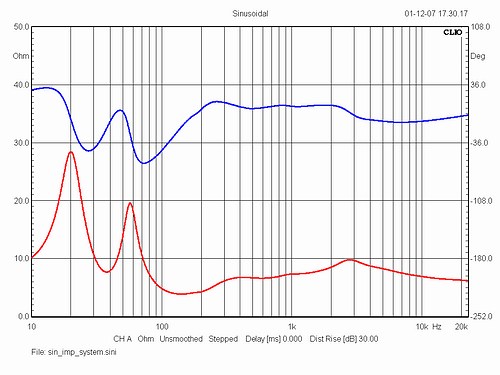
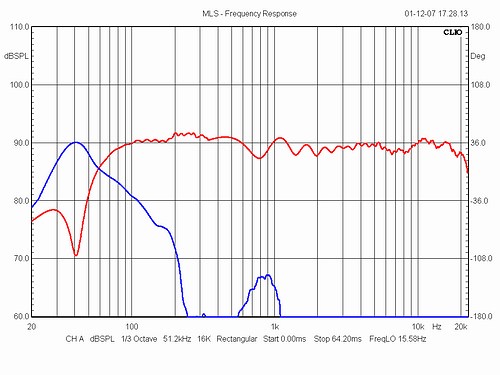
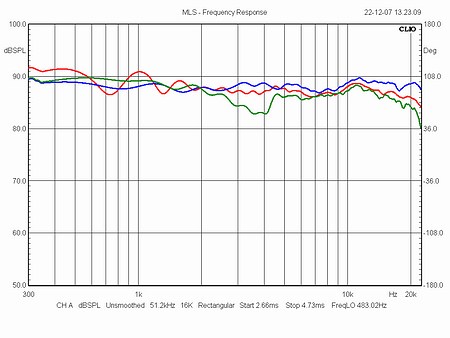
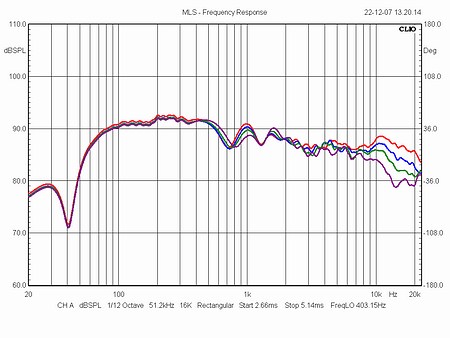
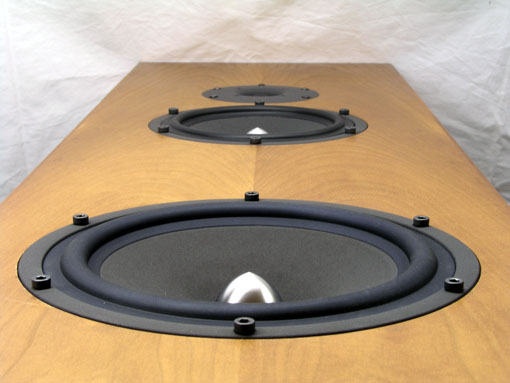
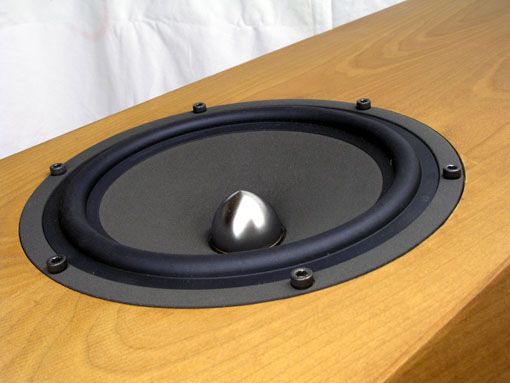
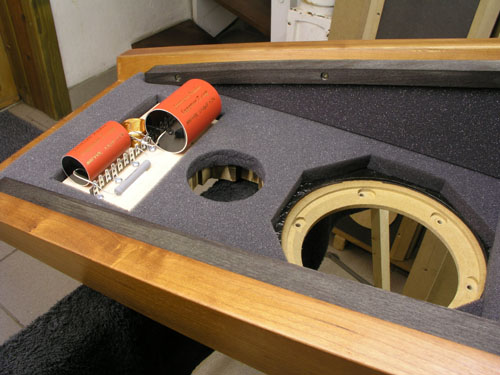
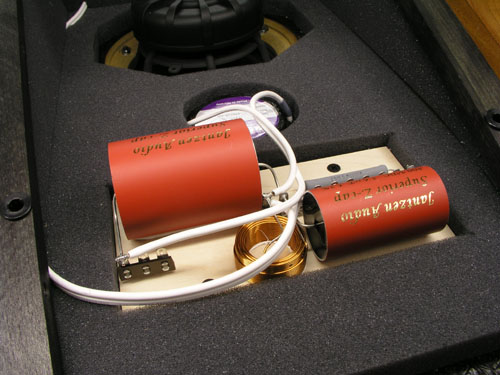
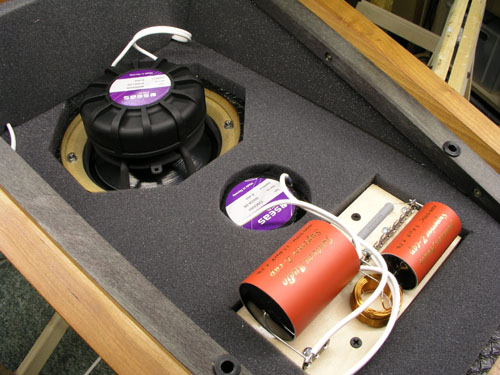
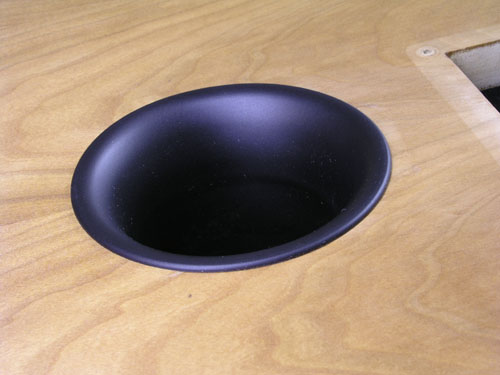
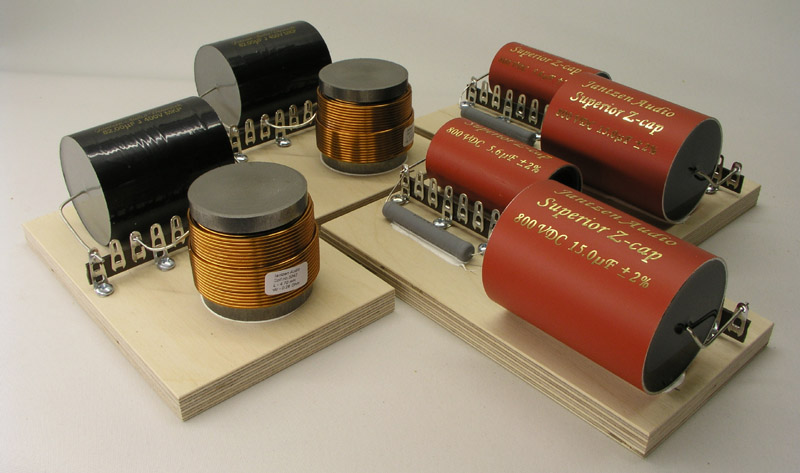
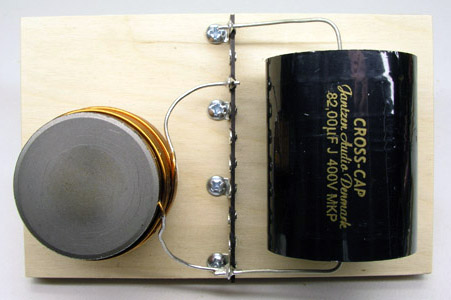
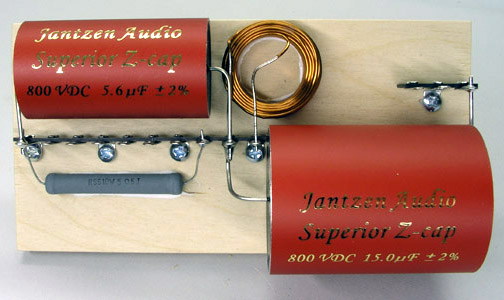
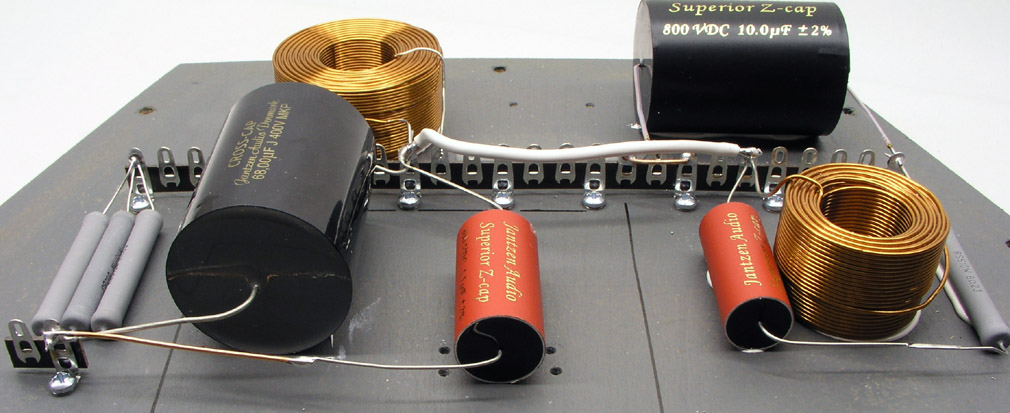
.jpg)
.jpg)
